Image: Airbus 380.
As the European airplane manufacturer Airbus completes 40 years, few will doubt that it will continue to have its regular share of controversy.
But, equally, most will agree that this unique experiment in transnational cooperation is an indisputable success.
Airbus @ 40: A success story
Image: Interior view of the A380.
This is important at the current juncture when the whole process of European construction, which had reached a high point with the creation of the common currency euro, is threatened as the future of the currency has become uncertain in the aftermath of the global financial crisis.
Airbus @ 40: A success story
Image: Airbus manufacturing unit.
When storms hit mankind as it journeys on the road of progress, it has to celebrate success so as not to lose heart and keep striving for a conflict-free better world - the postwar vision behind the creation of the European Union.
Airbus @ 40: A success story
Image: Airbus manufacturing unit.
When Airbus was first formed through an alliance of three European countries - Germany, France and the UK - few gave it much chance of survival, not to speak of success.
Airbus @ 40: A success story
Image: The Boeing company's first 787 Dreamliner is readied for its first test flight.Photographs: Robert Sorbo/Reuters.
With the indisputable superiority of US technology in the postwar world, when the former great powers of Europe were struggling to get back on their innovative feet, any notion that Airbus could one day beat Boeing would have invited ridicule.
Airbus @ 40: A success story
Image: Airbus interiors.
Yet that is exactly what has happened. Cumulatively, over the last decade (2001-10), Airbus has overtaken Boeing in the number of aircraft orders received.
Even as many well-known airplane manufacturers have fallen by the wayside, Airbus has increasingly challenged Boeing's supremacy, so that in the marketplace for large commercial aircraft today, it is a straight fight between the two giants.
Airbus @ 40: A success story
Image: Airbus interiors.
The main detractors of Airbus have been the Americans who have held that it has posed unfair competition because of its access to funding from partner governments. While Airbus has undoubtedly survived because of state subsidies, which the WTO has declared illegal, US defence orders have also provided a crucial prop to Boeing.
Airbus @ 40: A success story
Image: Airbus 380 interiors.
What the past role of subsidies and the increasing market share of Airbus indicate is that making large commercial airplanes is a highly risky business requiring massive amounts of capital and the gestation period that a newcomer requires to be able to stand on its feet is elephantine.
Airbus @ 40: A success story
Image: Lockheed aircraft.
The demise of players in the past like McDonnell Douglas and exit of those like Lockheed from civilian aircraft-making show that it was a "sporty game" in which a company put itself on the line every time it made a major investment in developing a new aircraft, and it was the romance of flying that sustained aviation pioneers.
Airbus @ 40: A success story
Image: A 320.
Airbus captured the popular imagination when it scored a technological feat by introducing the "fly by wire" A320 which was the first civilian aircraft to be driven by information technology.
Airbus @ 40: A success story
Image: Interiors of A380.
The lesson from this for India as it gets ready to support semiconductor manufacturing "fabs" is that extended state support for a technology-intensive, high-ticket commercial venture can be justified so long as it is carefully focused and attuned to the marketplace.
As for Europe, it must not lose heart in the process of holding hands and marching together by looking at the success of Airbus.

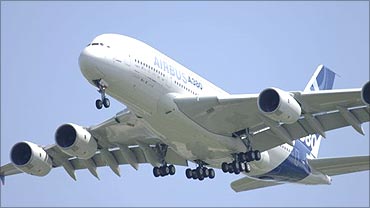
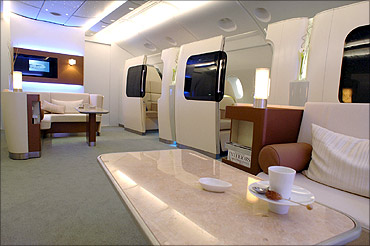

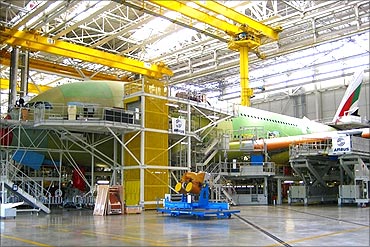
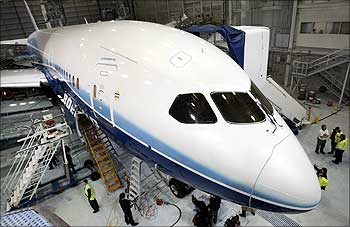
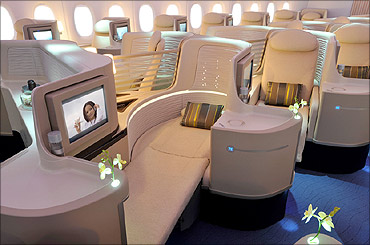
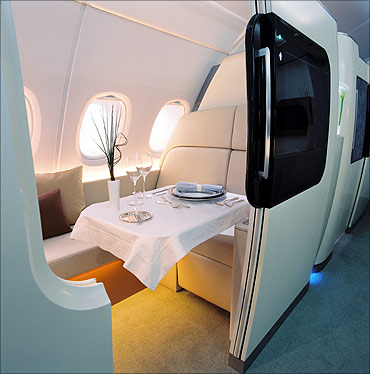
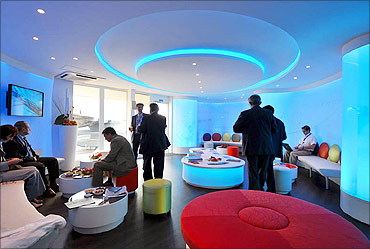
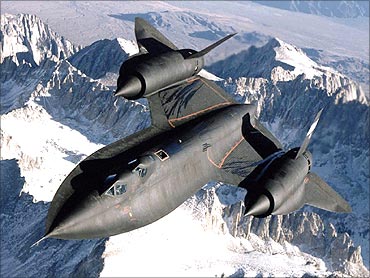
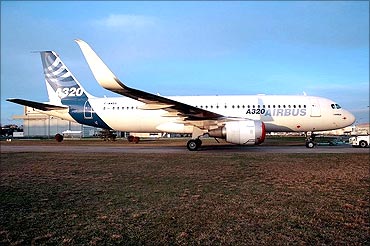
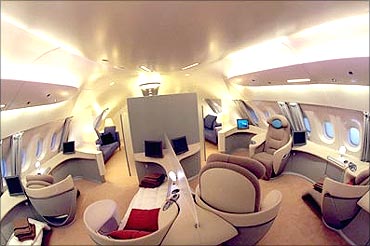

article